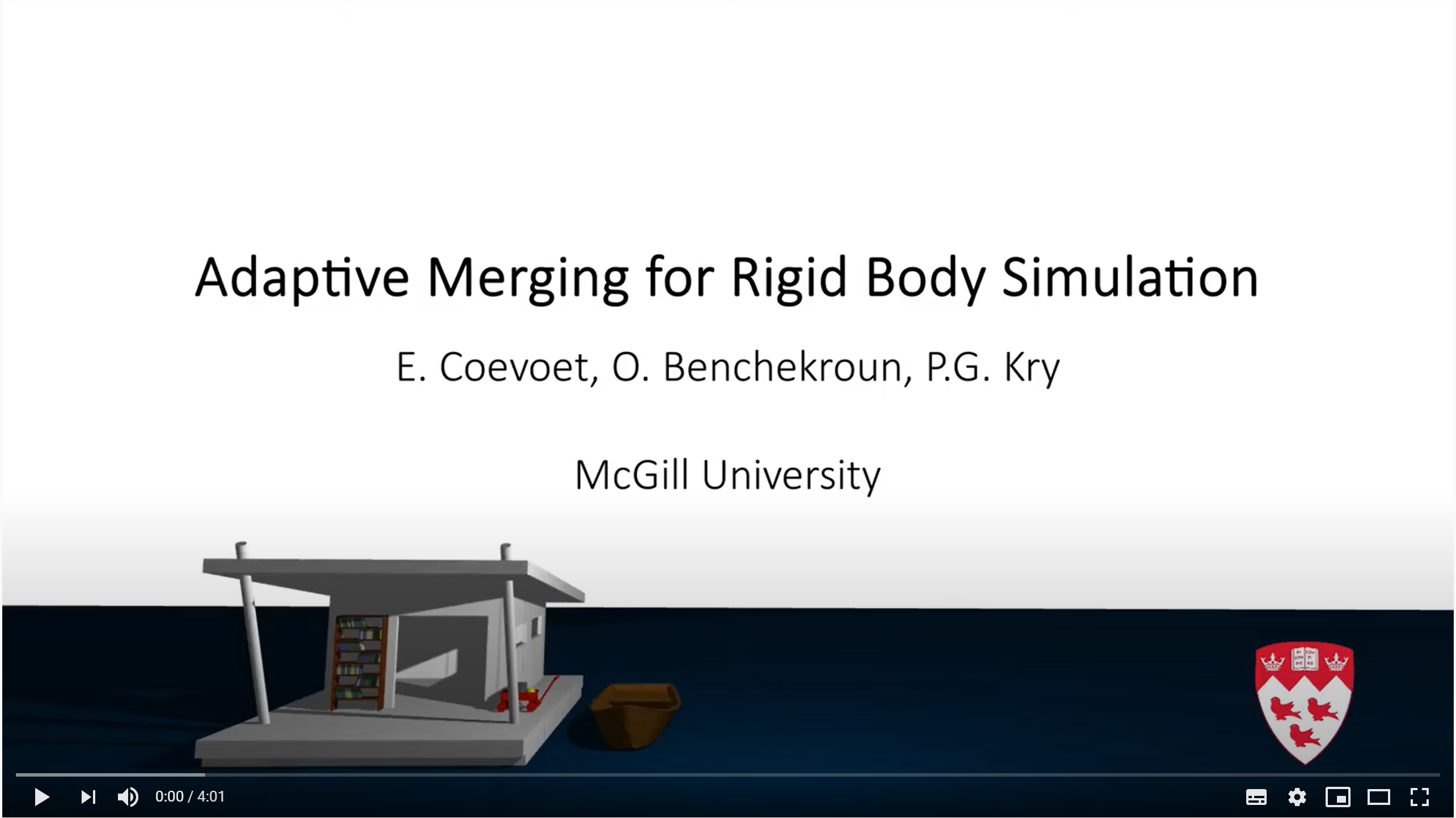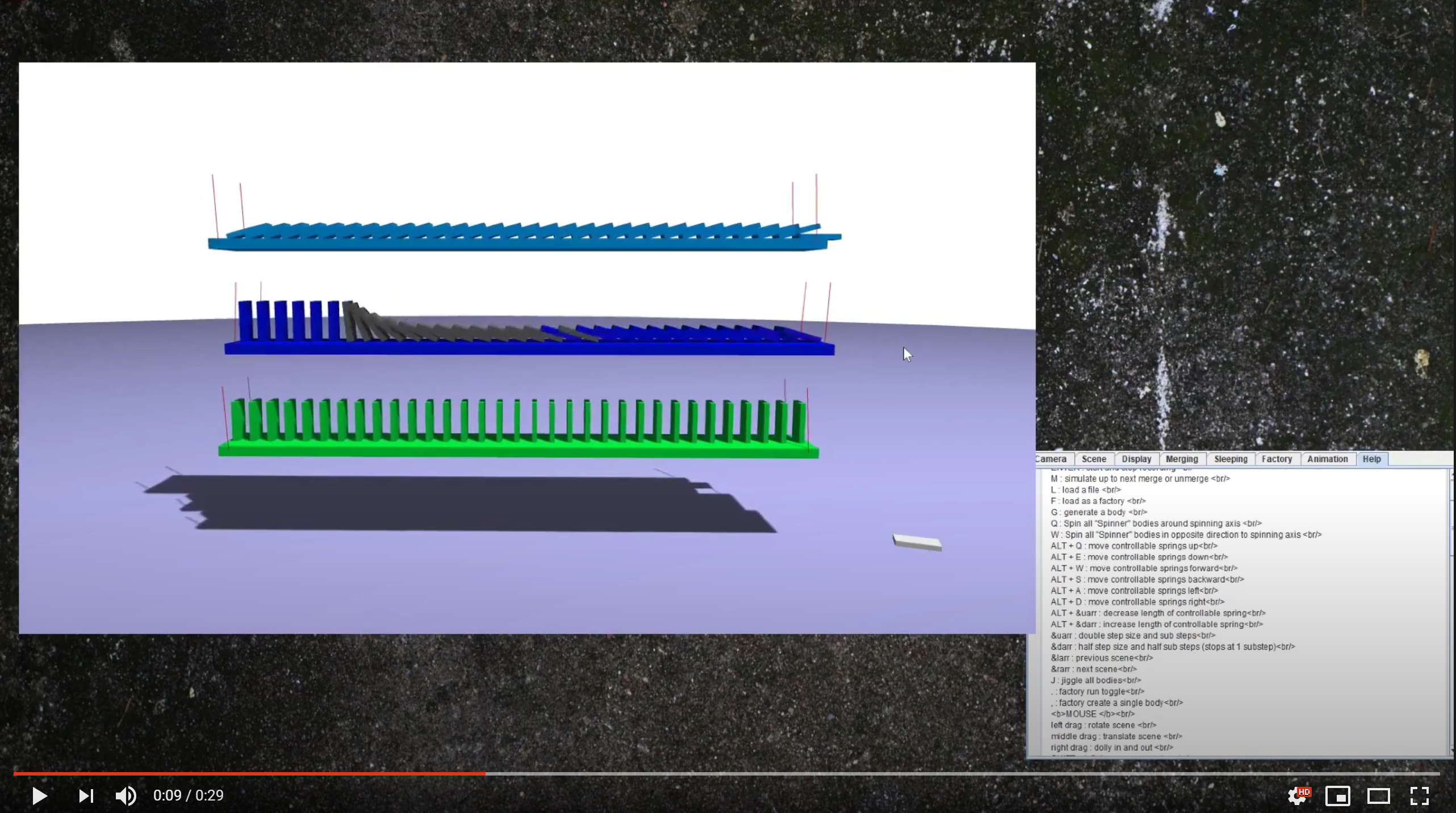Adaptive Merging for Rigid Body Simulation

Abstract
We reduce computation time in rigid body simulations by merging collections of bodies when they share a common spatial velocity. Merging relies on monitoring the state of contacts, and a metric that compares the relative linear and angular motion of bodies based on their sizes. Unmerging relies on an inexpensive single iteration projected Gauss-Seidel sweep over contacts between merged bodies, which lets us update internal contact forces over time, and use the same metrics as merging to identify when bodies should unmerge. Furthermore we use a contact ordering for graph traversal refinement of the internal contact forces in collections, which helps to correctly identify all the bodies that must unmerge when there are impacts. The general concept of merging is similar to the common technique of sleeping and waking rigid bodies in the inertial frame, and we exploit this too, but our merging is in moving frames, and unmerging takes place at contacts between bodies rather than at the level of bodies themselves. We discuss the previous relative motion metrics in comparison to ours, and evaluate our method on a variety of scenarios.
Video
Information
3D Java Application
To test our implementation, you can either download the latest release, or download (or clone) the project and open it in your favorite IDE. For instance with Eclipse :
- Go to
File - Select
Open project from File System - Browse
Directoryto AdaptiveMerging - Clic
Select Folderand finallyFinish - Now you can run the Java application
src/mergingBodies3D/LCPApp3D.java. Right click on the file andRun As\Java Application
Unfortunately if you are using MacOS you may not be able to interact with the objects in the scene, we are currently working on the issue.
Numerous examples are available in the folder scene3D or with the release. The scenes are built using XML (see scenes3D\README.md for more info).
If you want to build your own scene, you can also have a look at the scenes3D/python folder which contains tools to generate the XML, along with some examples.
2D Java Application
This repository also holds a 2D implementation of adaptive merging. You can try it by running the Java application src/mergingBodies2D/LCPApp2D.java, just note that the implementation in 2D is not up to date with what is described in the paper. Many examples are provided in the scenes2D folder, which contains a README.md file with more details on how to make your own scene.
Replicability
You can reproduce Figure 7 of the paper, Dominoes falling on slightly swinging platforms, by following the following instructions:
- Open the 3D Java application and load the scene
scenes3D/dominoesPlatforms.xml - Press space to start the simulation
- Let the dominoes merge, as shown in the following video
- Once the dominoes have merged with the platforms, whenever you’re ready, press shift and left click on the top left domino, drag it to the right to make it fall.
Note that you can press up/down key to accelerate/slow down the simulation.
Authors
Eulalie Coevoet, Otman Benchekroun & Paul G. Kry
Bibtex
title = {Adaptive Merging for Rigid Body Simulation},
author = {Coevoet, Eulalie and Benchekroun, Otman and Kry, Paul G.},
journal = {ACM Transactions on Graphics (TOG)},
volume = {39},
number = {4},
numpages = {13},
articleno = {35},
year = {2020},
publisher = {ACM New York, NY, USA}
}


